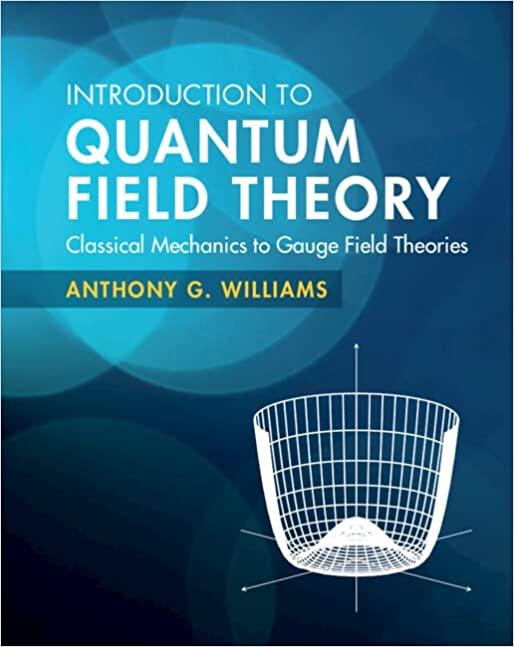A muon is a more massive version of an electron and has a mass of (105.7 mathrm{MeV}
Question:
A muon is a more massive version of an electron and has a mass of \(105.7 \mathrm{MeV} / \mathrm{c}^{2}\). The dominant decay mode of the muon is to an electron, an electron antineutrino and a muon neutrino, \(\mu^{-} \rightarrow e^{-}+\bar{u}_{e}+u_{\mu}\). If we have \(N(t)\) unstable particles at time \(t\), then the fraction of particles decaying per unit time is a constant; i.e., we have \(d N / N=-(1 / \tau) d t\) for some constant \(\tau\). This gives \(d N / d t=-(1 / \tau) N\), which has the solution \(N(t)=N_{0} e^{-t / \tau}\) where we have \(N_{0}\) unstable particles at \(t=0\). The fraction of particles decaying in the interval \(t\) to \(t+d t\) is \(-d N / N_{0}=(-d N / d t) d t / N_{0}=(1 / \tau) e^{-t / \tau} d t\). So the mean lifetime (or lifetime) is \(\int_{0}^{\infty} t(-d N / d t) d t / N_{0}=\tau \int_{0}^{\infty} x e^{-x} d x=\tau\), where \(x=t / \tau\). The half-life, \(t_{1 / 2}\), is the time taken for half the particles to decay, \(e^{-t_{1 / 2} / \tau}=\frac{1}{2}\), which means that \(t_{1 / 2}=\tau \ln 2\). The decay rate, \(\Gamma\), is the probability per unit time that a particle will decay; i.e., \(\Gamma=(-d N / d t) / N=1 / \tau\) is the inverse mean lifetime. A muon at rest has a lifetime of \(\tau=2.197 \times 10^{-6} \mathrm{~s}\). Cosmic rays are high-energy particles that have traveled enormous distances from outside our solar system. Primary cosmic rays have been accelerated by some extreme astrophysical event and secondary cosmic rays result from collisions of primary cosmic rays with interstellar gas or our atmosphere. Most cosmic rays reaching our atmosphere will be stable particles such as photons, neutrinos, electrons, protons and stable atomic nuclei (mostly helium nuclei). Muon cosmic rays therefore are secondary cosmic rays produced when primary or secondary cosmic rays collide with our atmosphere. A typical height for muon production is \(\sim 15 \mathrm{~km}\). What is the minimum velocity that a muon moving directly downward must have so that it has a \(50 \%\) chance of reaching the surface of the Earth before decaying?
Step by Step Answer:

Introduction To Quantum Field Theory Classical Mechanics To Gauge Field Theories
ISBN: 9781108470902
1st Edition
Authors: Anthony G. Williams





